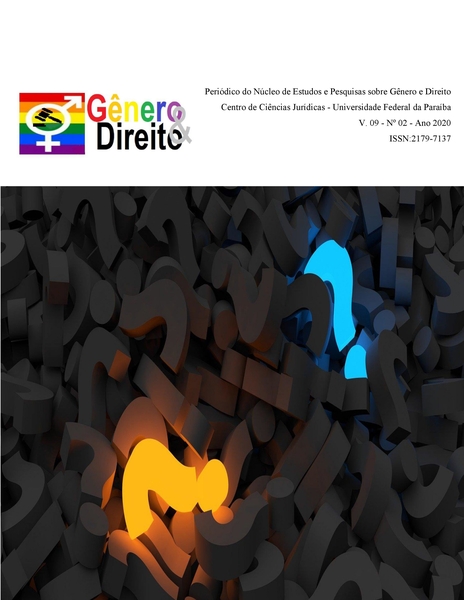AZERBAIJANI LITERARY LANGUAGE OF THE 17th CENTURY: THE SOCIO-POLITICAL CONTENT AND LANGUAGE OF THE ERA
DOI:
https://doi.org/10.22478/ufpb.2179-7137.2020v9n2.50780Palavras-chave:
Azerbaijani literary language, literary language norms, differentiation, stabilization, democratization, periods of literary language, socio-political and historical content, linguistic landscape, classical poetry genres, classical poetry, language, national language, folklore language, syllables, fairy tale, norm variabilityResumo
The article reveals the socio-political content of the XVII century. Both dependence on foreigners and the influence of internal tensions between tribes on the political life of the Safavid state are investigated. In such historical circumstances, the cultural environment is also based on sources that have not yet been identified. Under such circumstances, a description of the language is given. In particular, during the period of the Shah Abbas (during the rule of other shahs), attitudes toward the Turkish language are expressed in contradictory ideas. It has been established that the stage of the XVII century literary language is not a way out, but history as a turning point. This is proved, on the one hand, by scientific data, as well as facts about language. As a result of the research, it turns out that the language policy that underlies the existence of the state and the nation is carried out in the direction of Turkic rule in the 17th century. The article contains the rich language of the real world, including the introduction of the Turkish language in the history of the 17th century Azerbaijani literary language, the decline of the Persian language (including the accompanying Arabic language), the destruction of cults, as well as the intensification of new processes, such as differentiation, stabilization and democratization examples. In the 17th century, as in all periods of the history of the Azerbaijani literary language or at all stages of historical development, the process of defining a literary language and defining different styles (charming, scientific, official epistolary) took place. Style plays a significant role in relationships. In volume, the rate is determined in style and appears. As a result, it is noted that the 17th century very dynamically develops phonetic, lexical and grammatical norms in the direction of nationalization. The development of literary language, of course, all levels of language are available. But what if you want to translate it into one language? The real fact, which is obvious, or hidden, or not, is voluminous in the volume, which is a lexical system, which leads to great changes. This does not mean that in other languages, such as the phonological system, the language is checked and the file is checked. All, that is, it is not so, but here is a breakthrough for change. This is not an idea or an idea of ignorance and ignorance, but there is no certainty that changes in language change. The truth is that everything that creates a change in the original of another phenomenon, which confirms the existence of legality. The definition of phonetic norms for a certain period of time (continent, period or phase) is contained in a volume that is one of the other publicly available versions of the phone in the language, and, in each other's eyes, by removing from one-dimensional parallels, stabilization in language and content
Downloads
Referências
Ashurbeyli S. (1997).Shirvanshahs state. Baku: Azerneshr, 405 p.
History of Azerbaijan (1999). VII volume. III c.Baku: Science, 534 p.
History of Azerbaijan (from the far back to the 1870s.(1996). Baku: "Azerbaijan" publishing house, 872 p.
Sources of History of Azerbaijan(1989). Baku: ADU edition, 326 p.
Azeroglu B.(1977). Mohammad Ammani. Baku: Science, 129 p.
Azaroglu B.(1981). Saib Tabriz's art world. Baku: Writer, 175 p.
Bakikhanov А.А.(1987). Guliistani-Iram. Baku: Elm.
Bayramlı Z. (2015).The role of the Turkish Red Cross officers in the structure and management of the Safavid state of Azerbaijan. Baku: Europe, 348 p.
Bayramli Z.(2006). Azerbaijan Safavi State Structure and Management System, Baku: ADPU, 258 p.
Demirchizade A.(1979). History of Azerbaijani literary language. I h. Baku: Maarif, 1979, 268 p.
Demirli M.,Mammadli M.(2000).History of Azerbaijan.Baku:Tafakkur, 472 p.
Efendiyev O.(1993). Azerbaijan Safavid State. Baku: Azərnəşr, 300 s.
Emmani. (1983).Works (Composer A.Safarli). Baku: Writer, 339 p.
Emmani (1994). From ancient times to the twentieth century. Baku: Azerneshr, 687 p.
Fadai.(1957). Bakhtiarnama (Composer Q.Mammadli). Baku: Publ¬is¬hi¬ng House of Azerbaijan University, 155 p.
Hajiyev T.I.(2012). History of Azerbaijani literary language I Baku: Science, 476 p.
Hasanaliyev Z.(2007). International relations of the Safavid state in the XVII century. Baku: Nurlar, 344 p.
Hasanaliyev Z.M.(2000). Safavi state (1st half of the XVII century). Baku: "Altay" publishing house, 163 p.
Hasanaliyev Z.(2011). İnternal and foreign policy of Azerbaijan's empire state during the reign of Bayramli Z. II Shah Abbas. Baku: Science, 88 p.
Kerimov P.(2011). XVII century mother tongue Azerbaijani lyric. Baku: Nurlan, 354 p.
Karimov P.(2013). is a Turkic-speaking creator of P. Sadiq bey Sadiq. Baku: Publishing House "Science and Education", 159 p.
Gurbanov C.(2013). The ruler of Safavid I Shah Abbas (1587-1629). Baku: Zardabi LTD, 176 p.
Gurbanov R.(2008). History of Caucasus. Baku: Zardabi LTD, 583 p.
Gudratov D.(2000). History of Turkic peoples. Baku: Umman, 496 p.
Mahmudov Y.M.(2006).Azerbaijani diplomacy. Baku:Education,416 p.
Mahmudov Y.M.(1980). Travel to the Land of Fire.Baku:Youth, 119 p.
Masihi (2012). The couch. (With his manuscript) (Composer A. Safarli). Baku: Science, 480 p.
Masihi (1977). Varga and Gülsa (Composer A.Safarli). Baku: Azerneshr, 288 p.
Masihi (2005). Varga and Gülsa (Composer A.Yusifli). Baku: East-West, 336 p.
Onullahi S.M., Hasanov A.Q.(1974). More than two unknown letters from the Safavid rulers (from the date of correspondence in the Azerbaijani language). // The series of scientific works, history and philosophy sciences, № 4, p. p.84-93.
The 17th-century Azerbaijani lyric (Composers P.Karimov and M.Huseyn). Baku: Nurlan, 2008, 340 p.
Seyidov M.(1963). Tabrizi. Baku: EA publication of the Soviet Union, 99 s.
Safarl A. (1992).Masihi. Baku: Youth, 232 p.
Safarli A., Yusifli X.(1998). Ancient and Medieval Azerbaijan Liter¬a¬ture. Baku: Ozan, 632 p.
The Tabriz Plateau (2005). Divan (Designer P.Kerimov. Baku: Nurlan, , 449 p.
Vagif M.P.(1988). His works (compiled by A.Dadashzade). Baku: Writer, 192 p

